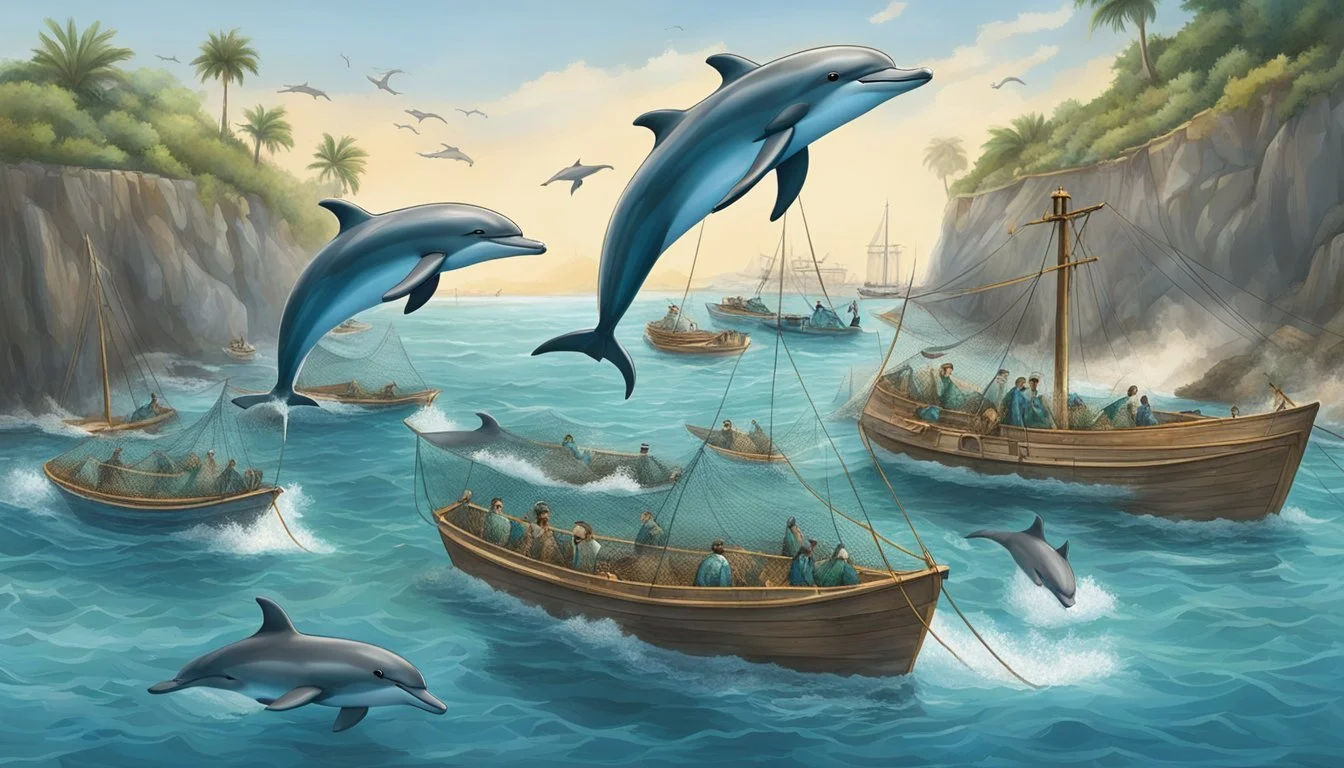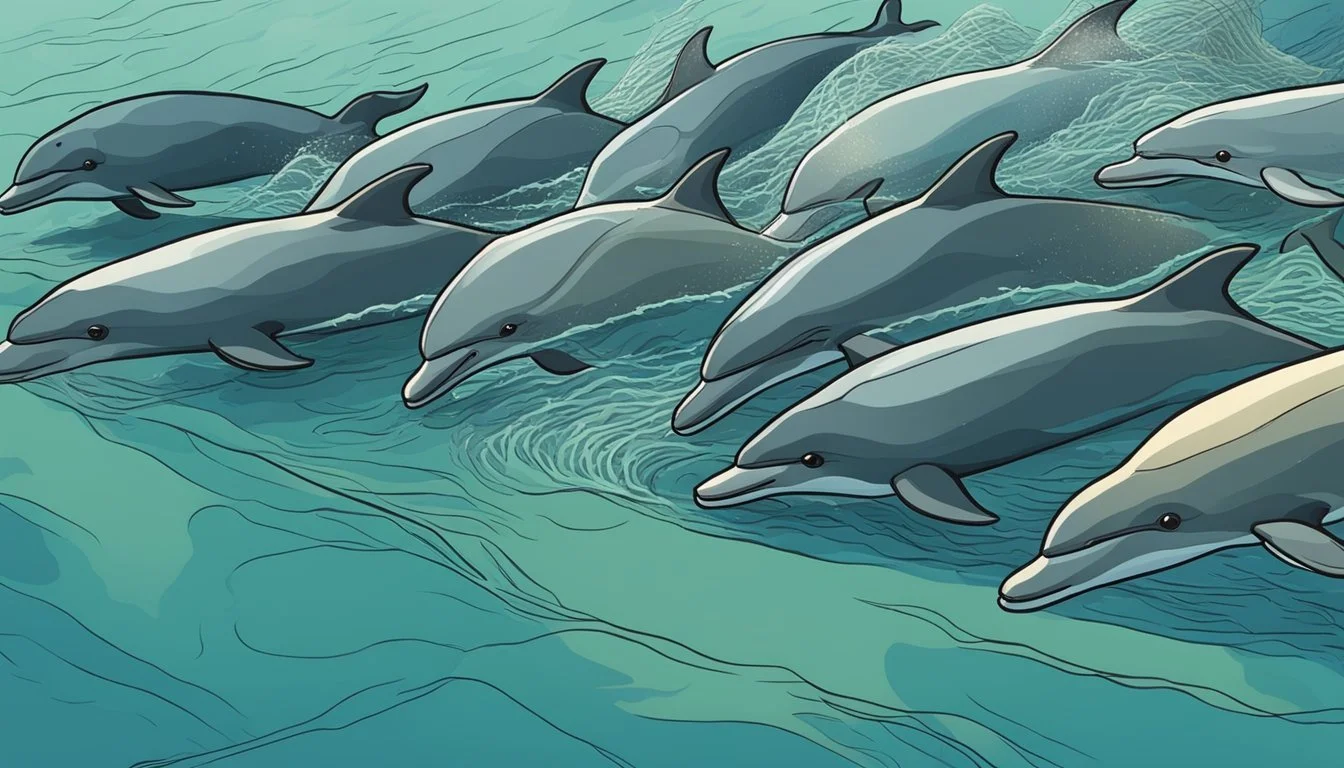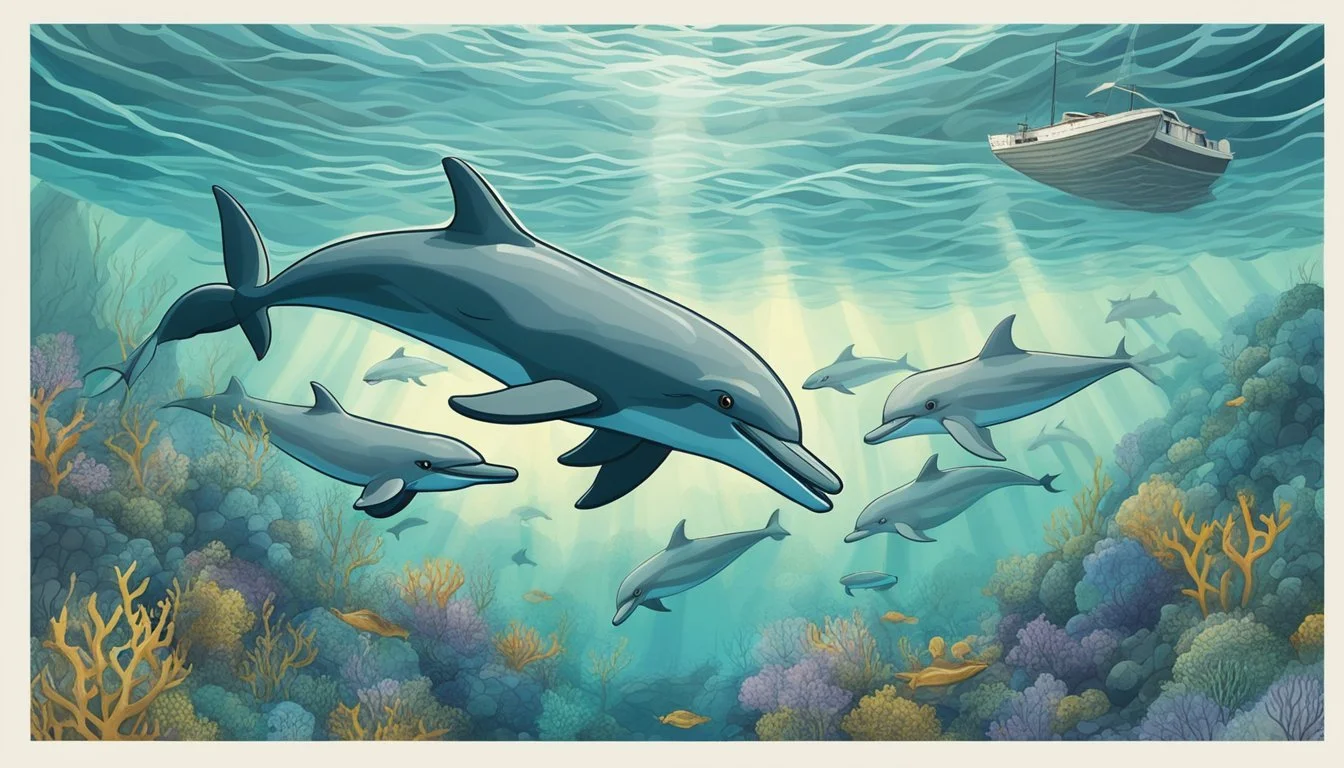Exposing Animal Abuse: The Actual Events Behind The Cove
Unveiling Dolphin Hunting in Taiji
"The Cove" exposed the dark underbelly of dolphin hunting in Taiji, Japan through groundbreaking undercover filmmaking techniques. Director Louie Psihoyos and his team employed hidden cameras and covert infiltrations to capture shocking footage of the annual dolphin slaughter. Their daring approach pushed the boundaries of documentary filmmaking while raising awareness about a brutal practice.
The film's release in 2009 sparked international outrage and debate over the ethics of dolphin hunting and captivity. Featuring former dolphin trainer Ric O'Barry, "The Cove" provided an insider's perspective on the lucrative trade of capturing dolphins for marine parks. The documentary's vivid depiction of the hunts in Taiji's secluded cove brought unprecedented attention to an issue that had long remained hidden from public view.
The filmmakers' risky tactics in obtaining footage raised questions about journalistic ethics and legal boundaries. However, their methods also resulted in a powerful cinematic experience that captivated audiences and garnered critical acclaim, including an Academy Award for Best Documentary. "The Cove" demonstrated the potential for activist filmmaking to drive social change and reshape public opinion on contentious environmental issues.
The Background of 'The Cove'
'The Cove' emerged as a groundbreaking documentary exposing the dolphin hunt in Taiji, Japan. Its creation involved a team of dedicated activists and filmmakers who aimed to shed light on a hidden practice.
Origins of the Documentary
'The Cove' began with Ric O'Barry, a former dolphin trainer turned activist. His experiences working with dolphins led him to become a vocal opponent of their captivity and exploitation.
In 2005, O'Barry met filmmaker Louie Psihoyos at a marine mammal conference. Psihoyos, intrigued by O'Barry's mission, decided to document the dolphin hunts in Taiji.
The team faced significant challenges accessing the secluded cove where the hunts took place. They employed covert filming techniques, including hidden cameras disguised as rocks.
The Filmmakers' Motivation
The primary goal of 'The Cove' was to expose the annual dolphin drive hunt in Taiji to a global audience. The filmmakers sought to raise awareness about the practice and its impact on dolphin populations.
They aimed to demonstrate the connection between the dolphin hunt and the lucrative marine park industry. By revealing this link, they hoped to influence public opinion and policy.
The team also wanted to highlight the potential health risks associated with dolphin meat consumption due to high mercury levels. This aspect added another layer of urgency to their message.
The Location of 'The Cove'
The documentary "The Cove" focuses on a specific location in Japan that became infamous for dolphin hunting activities. This area's geographical features and cultural significance play key roles in understanding the events depicted in the film.
Geographical Context
Taiji is a small coastal town located in Wakayama Prefecture on the southeastern coast of Honshu, Japan's main island. The town sits on Wakayama's rugged Pacific coastline, characterized by steep cliffs and numerous inlets. The cove featured in the documentary is a secluded inlet near Taiji, hidden from public view by surrounding hills and cliffs.
This natural formation creates an ideal enclosed space for the controversial dolphin drives. The cove's geography allows fishermen to herd dolphins into the narrow inlet, trapping them effectively.
Significance of Taiji, Japan
Taiji has a long history tied to whaling and dolphin hunting, dating back several centuries. The town's economy has traditionally relied heavily on these practices. Taiji is often referred to as the birthplace of Japanese whaling, with many residents viewing these activities as an important part of their cultural heritage.
The town gained international attention after "The Cove" exposed its dolphin hunting practices. Taiji became a focal point for animal rights activists and conservationists. Despite global criticism, local authorities and some residents continue to defend the hunts as a traditional practice and source of livelihood.
Taiji's aquarium industry also plays a significant role, with captured dolphins sold to marine parks worldwide. This economic aspect further complicates the ethical debates surrounding the town's activities.
Undercover Operations
The filmmakers behind "The Cove" employed daring tactics to expose dolphin slaughter in Taiji, Japan. Their covert mission relied on meticulous planning and innovative filming techniques to capture shocking footage.
Planning and Preparation
The team spent months strategizing their approach to infiltrate the heavily guarded cove. They assembled a diverse group of experts, including freedivers, tech specialists, and activists. Risk assessments were conducted to identify potential obstacles and develop contingency plans.
The crew acquired specialized equipment, such as high-definition cameras disguised as rocks and thermal imaging devices. They also secured a nearby safe house to store gear and review footage. Local contacts provided crucial intel on guard rotations and access points.
Team members underwent intensive training in stealth techniques and underwater filming. They practiced using the covert cameras and perfected their ability to move silently in darkness.
Secret Filming Techniques
Innovative technology played a key role in capturing evidence of the dolphin slaughter. Hidden cameras were planted around the cove perimeter, camouflaged to blend with the natural environment. Waterproof housings protected the equipment from the elements.
Underwater microphones recorded the dolphins' distress calls during capture operations. Aerial drones equipped with cameras provided an overhead view of the cove layout and hunting activities.
Nighttime operations utilized military-grade thermal cameras to film in complete darkness. Team members wore dive suits to avoid detection while placing and retrieving cameras in the water.
The crew developed a system of hand signals to communicate silently during filming. Data was immediately encrypted and transmitted to secure offsite servers to prevent confiscation.
Revelations of Animal Abuse
"The Cove" exposed shocking practices in Taiji, Japan, bringing global attention to the dolphin hunting industry. The documentary unveiled disturbing details about the capture, trade, and treatment of dolphins.
Dolphin Capture and Trade
The film revealed that fishermen in Taiji use a method called "drive hunting" to capture dolphins. They create a wall of sound with metal poles in the water, disorienting the animals and herding them into a hidden cove.
Once trapped, the dolphins face two fates. Some are selected for sale to marine parks and aquariums worldwide. These animals fetch high prices in the international trade market.
The remaining dolphins are killed for their meat. This practice raises concerns about both animal welfare and human health due to high mercury levels in dolphin meat.
Evidence of Cruelty
Hidden cameras deployed by the filmmakers captured graphic footage of the dolphin slaughter. The images showed fishermen using metal rods to pierce the dolphins' spinal cords, a method claimed to be humane but resulting in slow, painful deaths.
The documentary also highlighted the stress and trauma inflicted on dolphins during the capture process. Experts in the film argued that the drive hunts cause severe physical and psychological harm to these intelligent, social creatures.
Environmental activists featured in "The Cove" emphasized the contrast between the dolphins' treatment and their cognitive abilities, which are considered to be among the highest in the animal kingdom.
Public Response and Impact
"The Cove" ignited global outrage over dolphin hunting practices in Taiji, Japan. The film's revelations sparked intense media coverage and mobilized animal rights activists worldwide.
Media Coverage
Major news outlets extensively reported on "The Cove" and its findings. The documentary received widespread critical acclaim, winning numerous awards including an Academy Award for Best Documentary Feature in 2010.
International press highlighted the film's shocking footage and investigative techniques. Many articles focused on the ethical implications of dolphin hunting and captivity.
Television programs and talk shows invited the filmmakers to discuss their experiences, further amplifying the film's message.
Advocacy and Activism
"The Cove" galvanized animal rights groups and environmentalists. Organizations like Sea Shepherd Conservation Society intensified their campaigns against dolphin hunting in Taiji.
Activists organized protests at Japanese embassies and marine parks worldwide. Some launched boycotts of seafood products from Japan.
Celebrity endorsements boosted the film's visibility. Public figures like Hayden Panettiere and Isabel Lucas participated in demonstrations against dolphin hunting.
Online petitions and social media campaigns emerged, pressuring the Japanese government to address the issue. The film's impact extended beyond Taiji, sparking broader discussions about marine mammal captivity and conservation.
Legal and Ethical Considerations
The release of "The Cove" sparked intense debates about animal welfare and cultural practices. It led to policy changes and raised questions about the ethics of dolphin hunting.
Debate on Animal Rights
Animal rights activists argue that dolphins are highly intelligent and sentient beings deserving of protection. They claim the hunts cause unnecessary suffering and trauma. Supporters of the practice maintain it is a cultural tradition and important economic activity for some communities.
The film highlighted the use of drive hunting methods, which critics say are inhumane. Defenders counter that these techniques have been used for centuries. The debate touches on issues of animal consciousness, pain perception, and humanity's relationship with nature.
Legislation and Policy Changes
"The Cove" influenced policy decisions in several countries. The U.S. Ambassador to Japan spoke out against the hunts after viewing the film. Some Japanese officials called for stricter regulations on dolphin hunting practices.
Several nations banned the import of live dolphins captured through drive hunts. The European Parliament passed a resolution condemning the hunts. In Japan, some coastal towns voluntarily reduced or ended their dolphin hunting activities.
The film also led to increased scrutiny of marine parks and aquariums. Many facilities faced pressure to stop acquiring dolphins from drive hunts. Some announced changes to their dolphin sourcing policies in response.
The Film's Cinematic Techniques
"The Cove" employs innovative cinematic techniques to create a compelling narrative and visually striking documentary. The film combines undercover footage, interviews, and dramatic reenactments to expose dolphin hunting practices in Taiji, Japan.
Narrative Structure
"The Cove" follows a suspenseful, action-thriller structure. The film builds tension as the team plans and executes their covert mission. It interweaves personal stories, scientific information, and undercover operations.
The narrative unfolds through a mix of present-day footage and flashbacks. This approach provides context and emotional depth to the story.
Key interviews with activists and experts are strategically placed throughout the film. These segments offer crucial insights and maintain viewer engagement.
Visual Storytelling
Director Louie Psihoyos utilizes a variety of visual techniques to enhance the film's impact. Hidden cameras capture clandestine footage, creating a sense of urgency and authenticity.
Aerial shots and underwater cinematography showcase the beauty of dolphins in their natural habitat. These images contrast sharply with the gruesome hunting scenes.
The film employs night-vision and thermal imaging technology for covert filming. These techniques add a layer of intrigue and emphasize the secretive nature of the dolphin hunts.
Graphic animations explain complex concepts, making scientific information accessible to viewers. These visual aids help clarify the environmental and health implications of dolphin hunting.
The Aftermath
The release of "The Cove" sparked significant changes in Taiji and influenced global conservation efforts. Public awareness increased dramatically, leading to both local and international responses.
Changes in Taiji
Taiji faced intense scrutiny following the documentary's release. The town's dolphin hunts decreased in scale, though they did not cease entirely. Local officials implemented stricter regulations on hunting practices and increased transparency in their operations.
Some residents supported the traditional hunts, while others sought alternative economic opportunities. Tourism declined initially but later rebounded as the town diversified its attractions.
Taiji established a marine park, aiming to shift focus from hunting to conservation and education. This move generated mixed reactions from activists and locals alike.
Long-Term Influence on Conservation
"The Cove" catalyzed broader marine conservation efforts worldwide. Many countries strengthened laws protecting marine mammals and imposed sanctions on nations involved in controversial hunting practices.
Public awareness of dolphin captivity issues grew significantly. Several marine parks and aquariums faced pressure to end dolphin shows and release captive animals.
International organizations increased funding for research on dolphin populations and marine ecosystems. This led to improved understanding of cetacean behavior and more effective conservation strategies.
The film's impact extended beyond dolphins, inspiring similar exposés on other forms of animal exploitation. It became a model for using documentary filmmaking as a tool for environmental advocacy.







